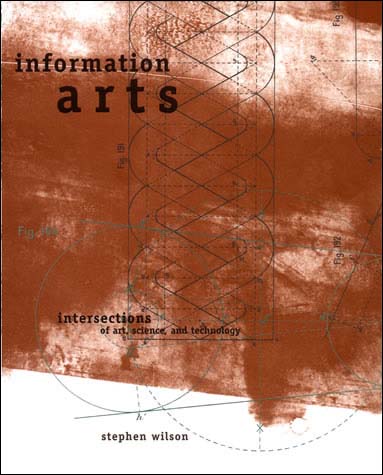Eugene Thacker: Biomedia (2004)
Filed under book | Tags: · autopoiesis, bioethics, bioinformatics, biotechnology, genetics, nanotechnology, posthuman, systems theory

As biotechnology defines the new millennium, genetic codes and computer codes increasingly merge-life understood as data, flesh rendered programmable. Where this trend will take us, and what it might mean, is what concerns Eugene Thacker in this timely book, a penetrating look into the intersection of molecular biology and computer science in our day and its likely ramifications for the future.
Integrating approaches from science and media studies, Biomedia is a critical analysis of research fields that explore relationships between biologies and technologies, between genetic and computer “codes.” In doing so, the book looks beyond the familiar examples of cloning, genetic engineering, and gene therapy-fields based on the centrality of DNA or genes-to emerging fields in which “life” is often understood as “information.” Focusing especially on interactions between genetic and computer codes, or between “life” and “information,” Thacker shows how each kind of “body” produced-from biochip to DNA computer-demonstrates how molecular biology and computer science are interwoven to provide unique means of understanding and controlling living matter.
Throughout, Thacker provides in-depth accounts of theoretical issues implicit in biotechnical artifacts-issues that arise in the fields of bioinformatics, proteomics, systems biology, and biocomputing. Research in biotechnology, Biomedia suggests, flouts our assumptions about the division between biological and technological systems. New ways of thinking about this division are needed if we are to understand the cultural, social, and philosophical dimensions of such research, and this book marks a significant advance in the coming intellectual revolution.
Publisher University of Minnesota Press, 2004
ISBN 0816643520, 9780816643523
226 pages
Key terms: bioinformatics, bioMEMS, nanomedicine, DNA computer, bioethics, systems biology, nanotechnology, base pair, molecular biology, biotechnology, biocomputing, DNA chip, systems theory, posthuman, autopoiesis, bio-ethics, proteomics, programmable matter, wet lab, Bertalanffy
PDF (updated on 2013-3-16)
Comment (0)Stephen Wilson: Information Arts: Intersections of Art, Science, and Technology (2002)
Filed under book | Tags: · art, art and science, artificial intelligence, artistic research, bio art, biology, ecology, electronic art, genetics, interactive media, media art, nanotechnology, new media, physics, robots, science, sound art, technology, telepresence, theory

“A new breed of contemporary artist engages science and technology—not just to adopt the vocabulary and gizmos, but to explore and comment on the content, agendas, and possibilities. Indeed, proposes Stephen Wilson, the role of the artist is not only to interpret and to spread scientific knowledge, but to be an active partner in determining the direction of research. Years ago, C. P. Snow wrote about the “two cultures” of science and the humanities; these developments may finally help to change the outlook of those who view science and technology as separate from the general culture.
In this rich compendium, Wilson offers the first comprehensive survey of international artists who incorporate concepts and research from mathematics, the physical sciences, biology, kinetics, telecommunications, and experimental digital systems such as artificial intelligence and ubiquitous computing. In addition to visual documentation and statements by the artists, Wilson examines relevant art-theoretical writings and explores emerging scientific and technological research likely to be culturally significant in the future. He also provides lists of resources including organizations, publications, conferences, museums, research centers, and Web sites.”
Published by MIT Press, 2002
ISBN 026223209X, 9780262232098
969 pages
PDF (updated on 2012-10-23)
Comment (0)
